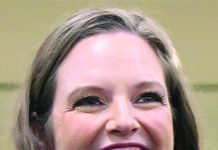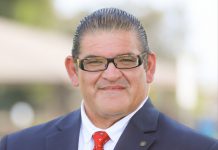These chilly nights have kick-started my personal fire-building season. Wood fires are the only source of heat in our home, so a fire in a woodstove is now a daily necessity.
I first learned how to build a fire from my paternal grandmother who lived deep in the redwoods of Butano Canyon up east of Pescadero. Each summer during my teens I spent a couple of weeks with her. It may have been summer, but her home was so shaded by huge redwoods that the overnight fog made mornings and evenings cold and damp.
Grandma Lydon arose early each morning and built a fire in her large kitchen stove. My job was to build the coming evening’s fire in the large fireplace in the living room. She would then inspect my work. Her most frequent correction was that I didn’t leave enough space between the layers of newspaper, twigs and branches. She believed that a fire was like a living creature and it needed to breathe.
Once the fire passed muster, she would give me a hug and say, “Be back in time for dinner.” I would grab my fishing rod and creel that had a sandwich in it that she had made, and race off into the upper Butano watershed where I could hike and fish for an entire day and never see another soul.
Jack London was another of my fire-building teachers, but his lesson was about what not to do. I came upon London’s short story “To Build A Fire” during my early teens. The story is about a man and his dog who go on a walk on the Yukon Trail. The story has stuck with me for over a half-century and I often still think of it when I build a fire. And, of course, my grandma.
The story resonated with me because the man is hiking alone, something I did in the Butano. But the danger he and his dog faced on the Yukon Trail was much more serious than anything I had ever encountered. And ever would.
Against the advice of an experienced Yukon resident, the day this man chose to make his trek was bright and clear but the temperature was approaching 75 degrees below zero.
As the title suggests, ultimately the successful building of a fire will be the man’s only chance of survival. And London illustrates that the man knew how to build a fire and was prepared to do it. But bad luck intrudes and the man eventually dies a slow death as his extremities succumb to the cold and finally stopping his heart. For we canine lovers, the dog is last seen heading off toward the man’s original destination.
Later I learned that London was one of the most highly-paid American writers of his time (1876–1916) and that he wrote much more than just dog stories. I encountered his works throughout my academic career. He wrote one of the best descriptions of the Croatians in the Pajaro Valley which is quoted in Donna and Kathy Mekis’ landmark book “Blossom Into Gold” (pps 57-59.)
And when I was working on the history of Chinese immigration in California, his anti-Chinese writings were startlingly blatantly racist. But, other times he wasn’t. London was a very complex artist.
Jack London has many things named for him, including Jack London State Historic Park in Sonoma County and of course Jack London Square which has a bronze statue overlooking the estuary.
It was just a matter of time before the racism and white supremacy in some of his writings caught fire, and in 2017 a petition drive was started to ask the Port of Oakland (the owners of Jack London Square) to remove London’s statue and name. The petition fell short of its signature target as groups supporting two different names to replace London’s—Barbara Lee and Bobby Seale—wrangled with each other. Then, after the arrival of Covid-19, the Port District told the petitioners that it had other issues to deal with and the name-change movement lost momentum.
However, during the 2017 campaign to remove London from the Square, an ethnic studies professor from UC Berkeley put forth the idea that it would provide a better educational opportunity to leave his name and statue and to erect an interpretive panel beside the statue to highlight the less-than-admirable strain of racism in some of London’s writings. At this writing, London’s name and statue are still there and there is no interpretive panel.
These days, each time that I put a match to paper, I think of my grandmother who taught me how to build a good fire, and who trusted me to wander those wild canyons alone. And sometimes I think of Jack London’s Yukon where one should never hike alone, even with a devoted canine companion.
On more somber evenings I think of the fires that have broken out across America, consuming the complexity of human history, the flames of righteousness erasing the diversity which most humans and their lives represent.
To paraphrase Grandma Lydon, history is alive and we must let it breathe in all of its contradictions.
Sandy Lydon is an award-winning historian and author. He has been a teacher for 61 years, the last 54 at Cabrillo College where he taught the history of the United States, Asia, Asian-America, the Monterey Bay Region and Santa Cruz County. He is a long-time member of the Watsonville-Santa Cruz Japanese American Citizens League. He lives in Aptos, with his wife Annie, two dogs and two wood stoves.











Sandy, we do not live in the Jack London era. burning firewood throws off HUGE amounts of CO2 , which is why we are having global climate change. this is 2023, not 1923. I suggest you find another source for heat for your home, and do our environment a favor. thanks.